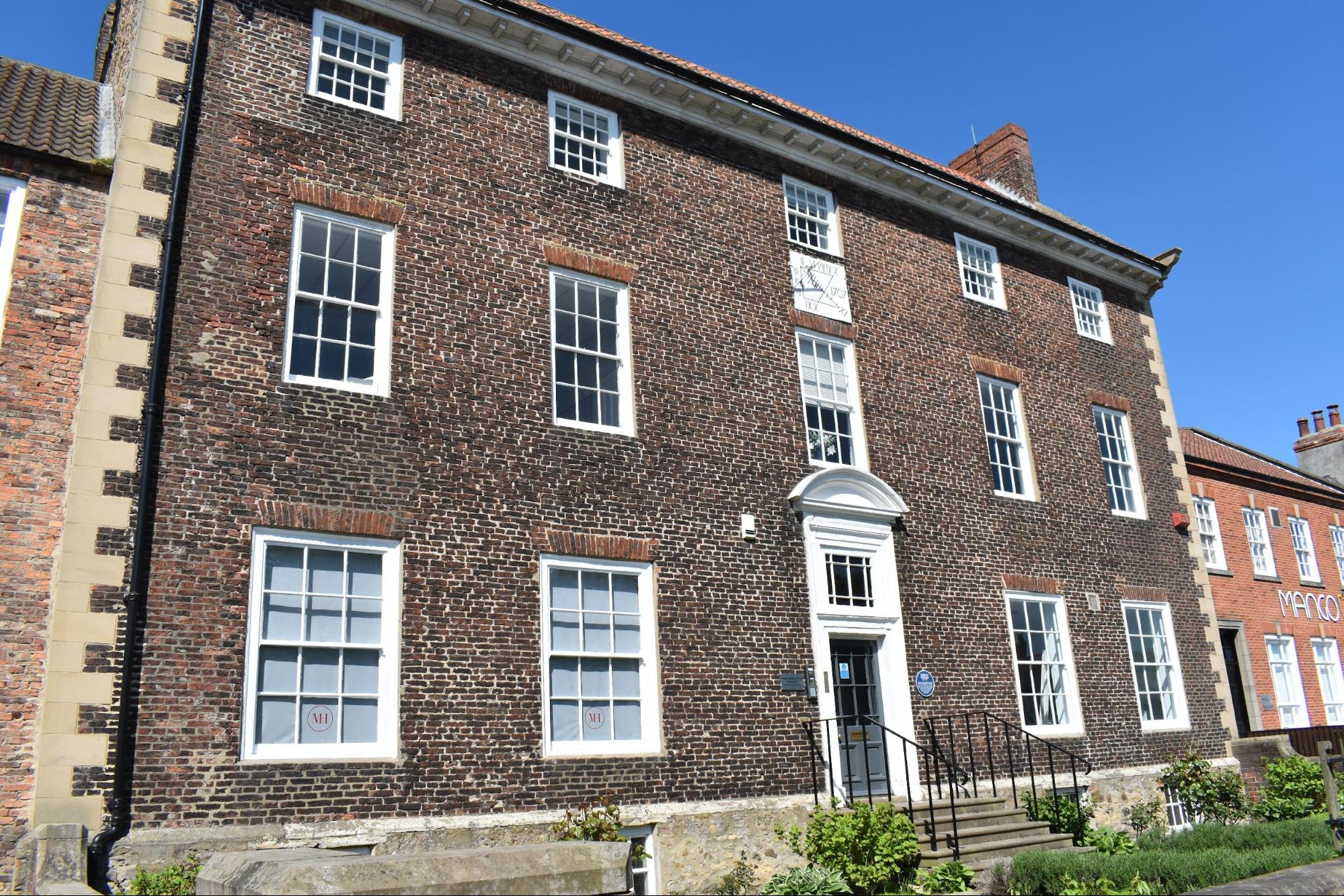
Introduction
With its roots in the English religious turmoil of the 16th and 17th centuries, The Manor House was completed in 1707 as a northern outlier of the fashionable Queen Anne style baroque mansion house with influences typical of Sir Christopher Wren and seen in fashionable houses around the country at the time. It contained features such as an over mantle wood carving by the renowned Grinling Gibbons, wood carver to Charles II who worked for Wren and has carvings in Hampton Court Palace and other grand houses; ornate wood panelling, some of which survives; and red brick facades, fired individually on site. The history of the man who built The Manor House is also fascinating and involves fashionable London Georgian society, a scandalous relationship, the colonies in the New World of America and ultimately fame and interment in Westminster Abbey.
Tours
History tours of The Manor House can be arranged for groups or individuals; please contact us here [link] or by messaging enquiries@manorhousesedgefield.co.uk for prices and availability.
Tours include internal and external architectural and design details, the history of the man who built it, his family and subsequent occupants and local history relating to the building. Refreshments can be provided and included in the price.
Book – Hidden in Full View, a summary
The Manor House in Sedgefield was built as a Queen Anne mansion house by London Judge Robert Wright who was the son of a notorious Chief Justice of England who was charged with treason by William of Orange, and who then went on to become Chief Justice of colonial Carolina while his son became Governor of Georgia.
Hidden in Full View is the first book to document the history of The Manor House in Sedgefield which subsequently became the offices of Sedgefield Rural District Council and then the Magistrates Court.
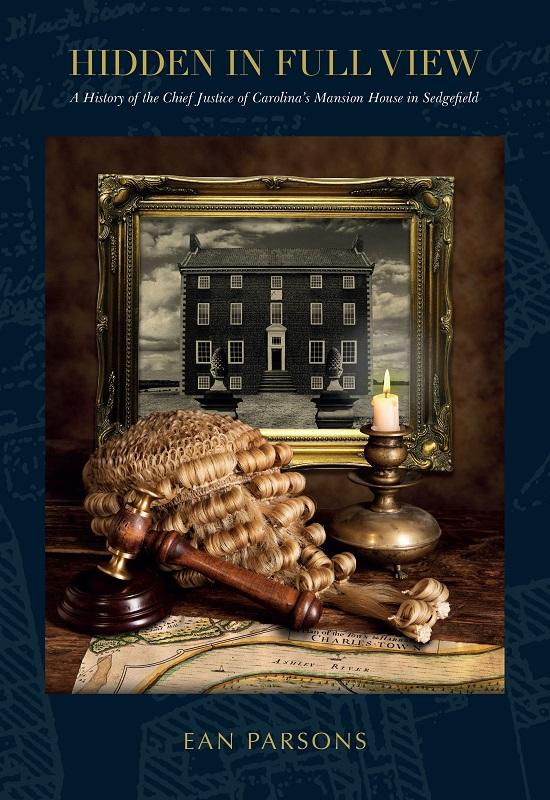
The book was researched and written by current owner Ean Parsons who has revealed a colourful history for a building which stands prominently overlooking Sedgefield village green in County Durham but was paradoxically anonymous for over 200 years.
The book is available from The Manor House for £12.99 by contacting enquiries@manorhousesedgefield.co.uk or 01740 629 264.
For more info please take a look at our Facebook Page.
Hidden in Full View has received some very complimentary feedback and reviews;
"Thank you very much for sending me a copy of your book. It arrived yesterday, and I started reading it at once. You have certainly put in a lot of research". Caroline Knight MA, Fellow of the Society of Antiquaries of London and specialist in British architecture of the 16th - 18th centuries.
"Just received your book which looks excellent. Many congratulations on such an authoritative volume." Martin Roberts, Author, Pevsner Guide to The Buildings of England; County Durham 2021 edition.
A brief history of The Manor House
The Manor House was built by Robert Wright a lawyer of Middle Temple in London who took the role of Judge of the Common Pleas for the north of England in 1689 to escape persecution after his father the infamous Sir Robert Wright Chief Justice of England had died in Newgate Prison charged with treason by William of Orange following the Glorious Revolution of 1688/89.
The Wrights were wealthy landowners of Kilverstone Estate in Norfolk and enjoyed hunting, so it is likely the hunting tradition of Sedgefield area was an attraction for Robert. A rare dog gate which survives at the top of the first flight of the grand staircase hints at the presence of hunting dogs. The impressive James Paine designed Palladian Venetian Window above the grand staircase was likely added later in 1756 by John Burden owner of Hardwick Estate who bought The Manor House that year and had engaged the renowned architect to design his pleasure grounds including the follies in Hardwick Park west of Sedgefield.
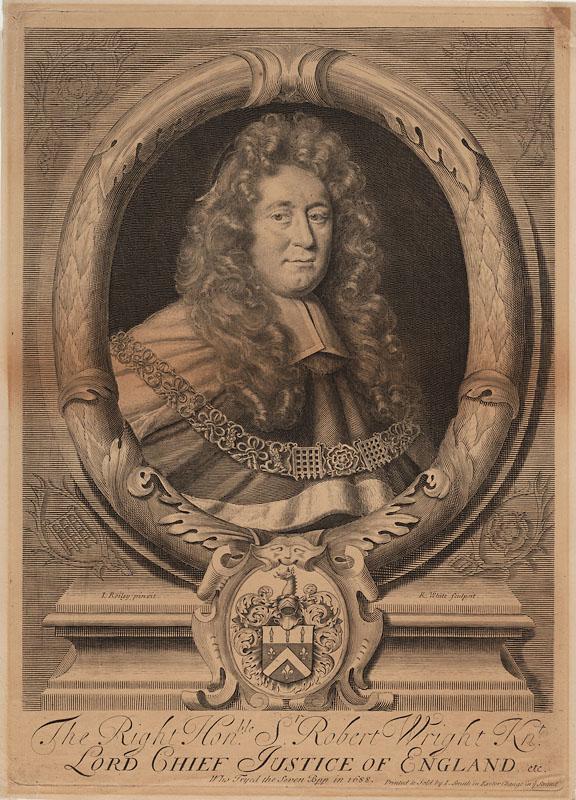
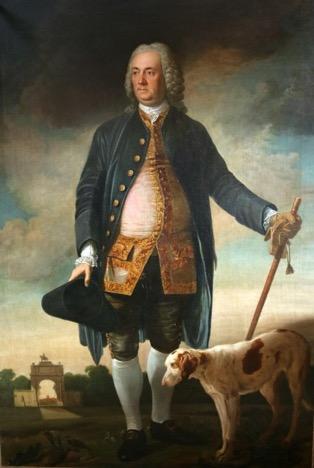
It is hard to visualise now but in the late seventeenth century, before the Sedgefield Enclosure Act of 1676 had time to have an affect the centre of Sedgefield we are familiar with today did not exist. Robert Wright’s new mansion house was built to stand alone on a ridge west of and facing St. Edmunds Church with the land falling away from its rear façade towards Hardwick Estate. There would have been courtyard gardens to the front behind the pineapple adorned gate peers (pineapple being a fashionable sign of affluence) and extensive gardens to the rear.
The land on which the Manor House was built was held as copyhold by the Lord of the Manor of Middleham in the Bishopric of Durham and the title changed hands twice between the Freville and Lambton families in the late seventeenth and early eighteenth centuries. It eventually came to Robert Wright as a marriage settlement when one of Robert’s seven sisters, Anne came north to marry Freville Lambton, owner of Hardwick Estate at the time whose own name displayed the union between the Freville and Lambton families (and is also commemorated on the font in St. Edmunds Church, Sedgefield).
The Manor House’s time as a mansion house for Robert Wright was short for when George I succeeded Queen Anne to the throne in 1714 Robert’s years of needing to avoid hostile royal attention were over and he was free to return and live openly in London society.
When he came north in 1689 Robert married Sedgefield widow Alicia Johnson-Pitt who at 46 was twice his age of 23. The marriage gave Robert the appearance of permanency in Sedgefield - and more land. Alicea, who was the daughter of land owner John Johnson of Sedgefield and widow of Baldwin Pitt would have lived in the Manor House and may have had children by her former marriage but she had none with Robert.
Meanwhile, Robert continued his double life on visits to London and in 1703 had his first child by his mistress Isabella Bulman with whom he would have a further six children by 1716. From 1714 due to royal and political changes his life was mainly in London with Isabella and their children and he began to surrender titles to his land and properties in Sedgefield.
Robert Wright was an ambitious and wealthy man in fashionable London at a time when Britain’s place in the world and its wealth were in the ascendancy. He would have been well aware of the fortunes being made overseas especially in the New World on the other side of the Atlantic and he likely frequented the Carolina Coffee House on Birchin Lane in London near Wren’s St. Pauls Cathedral and learned of the riches of being a plantation owner in the royal colonies such as Carolina.
Different coffee houses handled different interests and the colony of Carolina in the New World was of particular interest; it was named for Charles II and was governed by Lord Protectors originally appointed by him. By 1720 all was not well in Carolina, shares held by Lord Protectors had changed hands, some had died and there were disagreements - they needed a lawyer to take on the role of Chief Justice and provide remedies. Things had changed, it was no longer dangerous to claim association to Charles II or James II and his father being Sir Robert Wright was no longer a problem for Robert Wright but he did have an estranged wife, a mistress and seven illegitimate children and a move overseas to a prosperous colony was an attractive option.
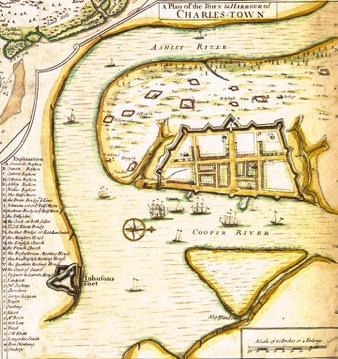
Robert was a man whose father had died charged with treason and a man with seven children by a mistress. The loyal leaders in Carolina had need of a judge to resolve differences that had developed between them and Judge Robert Wright had the qualifications they needed and he had reasons to need them also.
Robert had begun to dispose of his land and property titles in Sedgefield in 1717 and when Alicea, his wife in Sedgefield died in 1723 aged 80 Robert Wright wasted no time; he married Isabella just a week later and then a short 13 months later when negotiations and arrangements for his new life in Carolina were concluded he embarked his family, servants, coach and property on board ship and sailed for Carolina to become Chief Justice. He landed in January 1725 and took up his new role as Chief Justice and took ownership of a plantation on The Ashley River.
There is a first hand account of the arrival of the family in Charles Town;
"Here is laitly arrived in this province one Mr Robert Wright, a gentleman of large family of both sons and daughters". She went on to say that the family "appear to be very genteel people and to have a good substance. It is said they have now 4-500 pounds in England at a place called Sagefield near Newcastle (and) he has been a member of the English Parliament. “He has brought over a coach [and] servants in livery''. She went on to pose the question what was his reason for leaving England? Suggesting an answer she continues, "some say his father was a judge in King James' reign and that being a non-juror (non - jurors were high church - Church of England who did not support Protestant William of Orange as King) was weary of heavy taxes, but I believe they indever to keep it privett be it so or not however he is likely to make a good settler [as] he has bought a large plantation with some buildings upon Ashley River and has paid a great deal of money for it, if you know of anything of him".
This is an extract of a letter which was written by Elizabeth Hyrne, a plantation settler with her husband and sons in Charles Town, Carolina to her brother in Lincolnshire dated 21st January 1725 and probably sent via the Carolina Coffee House.
Robert Wright presided as Chief Justice of Carolina from 1725 until his death in 1739 though his position was not confirmed by the King until 1730, no doubt because of concern over his past, by which time the colony had been split into North Carolina and South Carolina.
During his time as Chief Justice, he added to his land holdings increasing the size of his plantations and employed hundreds of slaves; he died from a fever during an epidemic which swept through South Carolina. Isabella survived him.
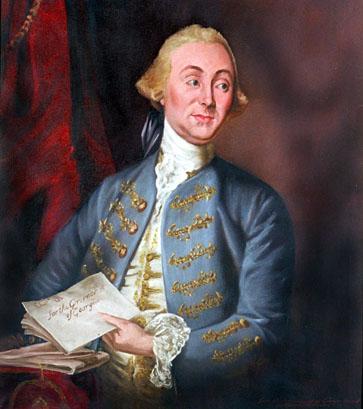
Robert and Isabella’s seven children all prospered. The three girls, Isabella, Anne and Susannah all married well and three of the four boys, Robert, Charles and Jermyn prospered in land and business. The fourth boy, James born in 1716 had an illustrious career, he followed his father into law, obtaining a degree from Grays Inn, London and then practiced in Carolina. He went on to become the Royal Governor of pre-independence Georgia until the American Revolution of 1775 - 1783. He remained loyal to the Crown and did everything in his power to retain the colony for Britain until he eventually was forced to leave in 1778. He returned to Georgia in 1779 before being forced to leave finally in 1781. He returned to London, living in Fludyer Street and died in 1785. In recognition of his loyal career, he was interred in the North Transept of Westminster Abbey, where his tomb can be found today.
Following the departure of Robert Wright to Carolina in 1724 his mansion house in Sedgefield lost its purpose. Robert left behind him a confusing legacy of claims to the title. The house was built on land owned by the Bishopric of Durham within the property of the Lord of the Manor of Middleham and after 1724 a number of people made claims to the title including John Cotton a Lord Proprietor of Carolina who no doubt helped arrange Robert’s move to the New World. There were four claimants in all and there is no doubt their interest was pecuniary rather than in the property itself. The house’s future was not resolved until 1756 in the Royal Court of Chancery of London. It was sold to the highest bidder who was John Burdon who had bought Hardwick Estate from the Lambton family in 1748. John Burdon’s architect James Paine who was designing and installing the follies in Hardwick Park at the time is likely to have installed the impressive Palladian Venetian window into the rear wall of The Manor House above the staircase.
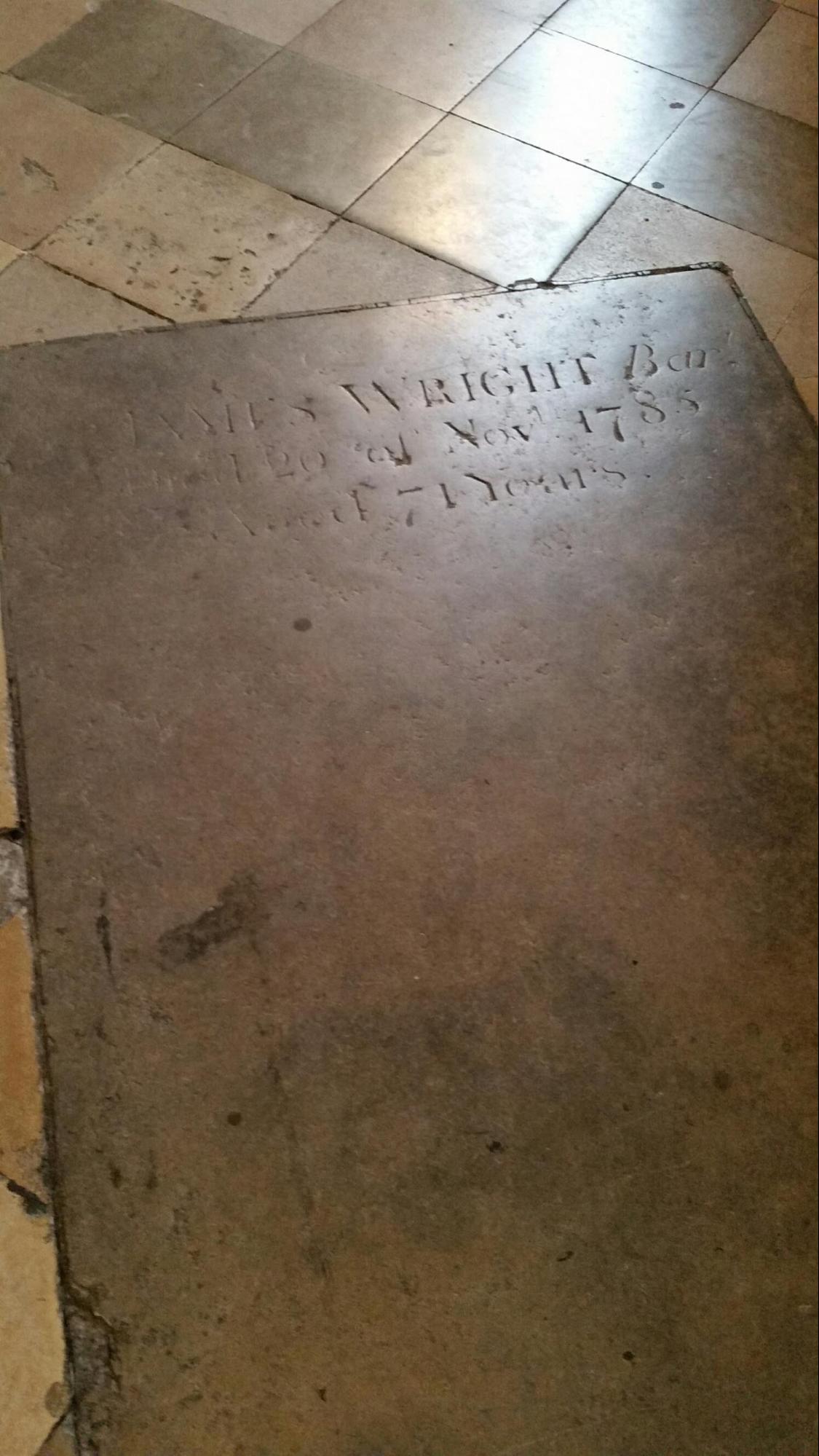
Between 1725 and 1907 the Manor House was most likely continuously used as a residence and had a number of title holders and occupiers. In 1907 following the deaths of the last occupiers William and Alice Snowdon at a time when property laws were changing, the title was taken by the Poor Union of Sedgefield and the house was occupied by Sedgefield Rural District Council who paid rent. In 1927 the council took the title directly and it is notable that the conveyancing agreement still at that time refers to the property as a ‘mansion house’. It is not known why or when it became known as the ‘Manor House’; it was most likely a result of its prominence in being the home of the district council and possibly confused with the land ownership being in the hands of the Lord of the Manor of Middleham. The council retained occupancy until 1974 when offices were transferred to a new building at Green Lane, Spennymoor as Sedgefield District Council under local government reorganisation. From 1974 to 1990, the Manor House served as Sedgefield Magistrates Court until a new court building was built in Newton Aycliffe.
The Manor House was sold by private bid in 1992 when it was bought and restored by local builders and began life as an office building. It changed hands twice before being bought by the present owners in 2014.